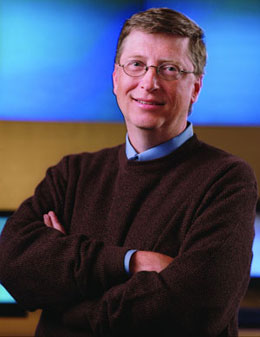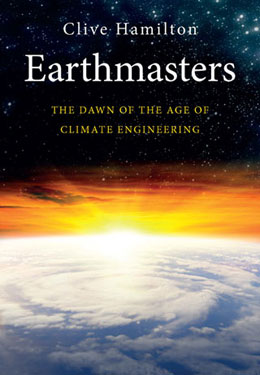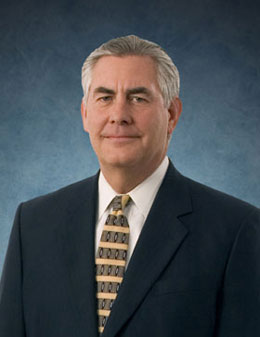Playing God with the Climate
‘The Ultimate Technofix’: Playing God with the Climate – By […]
Date Posted:
May 31, 2013
‘The Ultimate Technofix’: Playing God with the Climate – By Clive Hamilton / CAPPE March 7, 2013: Climate scientists have watched with mounting alarm as carbon dioxide concentrations have increased relentlessly. The anxiety has deepened each year as it has become clearer that the range of emissions paths mapped out by experts in the 1990s and early 2000s were unduly optimistic. The actual growth in emissions – boosted by explosive growth in China – has described a pathway that is worse than the worst-case scenario.
Alarm has spread to staid organisations like the International Energy Agency. In 2011 it declared: ‘On planned policies, rising fossil energy use will lead to irreversible and potentially catastrophic climate change.’ Late last year a report by the World Bank warned that ‘we’re on track for a 4°C warmer world marked by extreme heat-waves, declining global food stocks, loss of ecosystems and biodiversity, and life-threatening sea level rise.’
A world warmed by four degrees
It’s hard to communicate to the public what a world warmed by 4ºC will be like, or even that the IEA and the World Bank should be taken seriously. After all, for many people one unseasonable snowstorm is enough to nullify decades of painstaking scientific study. And psychologists have discovered that, after accounting for all other factors, when people are put in a room and asked about climate change they are significantly more likely to agree that global warming is ‘a proven fact’ if the thermostat is turned up.
So for at least a decade climate scientists have been disturbed by the widening gap between the actions demanded by the evidence and those being implemented or even considered by the major polluting nations. At the same time, their work began to focus on the dangers of feedback effects in the climate system, that is, processes that amplify or dampen the direct warming effect of rising greenhouse gases.
For example, as warming melts the Arctic ice cap, the exposed water is darker than the highly reflective ice it replaces and so absorbs more heat from the sun. Many in the expert community received a fright from the dramatic declines in Arctic summer sea ice in 2005 and especially 2007. And the melting of sea ice this past northern summer set new records.
The study of feedbacks has been closely related to another idea emerging in the scientific literature – that of tipping points.Small changes in one element of the climate system may initially have only small effects, but at some point a threshold may be crossed where the system, driven by amplifying feedbacks, flips into a new state. Palaeoclimatologists have discovered many instances in the Earth’s geological record of the climate shifting abruptly from one state to another, within a few decades. The esteemed palaeoclimatologist Wally Broecker warned: ‘The palaeoclimate record shouts out to us that, far from being self-stabilizing, the Earth’s climate system is an ornery beast which overreacts even to small nudges.’
Against this background, climate scientists began to talk about possible responses to a climate emergency – such as a massive methane release with rapid melting of permafrost, the collapse of the West Antarctic ice sheet, or rapid dieback of the Amazon forests.
Any of these could quickly shift the global climate into a new state, and there would be no way of recovering the situation. How, they asked, could we intervene to prevent these things happening? If Plan A, persuading the world to cut emissions, is failing, shouldn’t we have a Plan B? And so in the last few years, research into various schemes to engineer the climate has been accelerating rapidly.
Space mirrors & painted roofs
Geoengineering may be defined as deliberate, large-scale intervention in the climate system designed to counter global warming or offset some of its effects. More than 40 schemes have been put forward, with some the subject of intensive research.
They are usually divided into two types: methods to remove carbon dioxide from the atmosphere – such as by capturing it from the air, making biochar and adding lime to the oceans – and solar radiation management technologies aimed at increasing the Earth’s reflectivity. Methods include painting roofs white, putting mirrors in space and brightening marine clouds.
Ocean iron fertilisation & sulphate aerosol spraying
When we dig up and burn fossil carbon we make use of its trapped energy; but the carbon atoms do not disappear. So where do they go? First they go into the atmosphere. Some is then soaked up by vegetation. Some sooner or later ends up in the various layers of the oceans. The deep ocean has the capacity to absorb large amounts of carbon dioxide from the atmosphere, and it would help if we could get more carbon down there and hope that it stays.
But how do we get carbon to the deep ocean? The answer lies in what is known as the biological pump. Tiny marine plants known as phytoplankton grow by combining carbon dioxide, various minerals and sunlight to multiply into blooms. On death, gravity causes the plankton to sink, taking its carbon to the deeps.
The effectiveness of the biological pump depends on the suitability of conditions for marine life, including the availability of micronutrients, especially iron. If a shortage of iron is limiting plankton growth in an area of ocean then perhaps the artificial addition of the missing ingredient can stimulate algal blooms.
Fertilising some areas of ocean with iron slurry does indeed induce algal blooms. But it turns out that much of the carbon fixed in the phytoplankton does not find its way to the ocean floor but circulates in the surface waters, feeding the food chain, before being emitted as carbon dioxide back into the atmosphere.
And while iron fertilisation stimulates biological productivity in one area, nutrient stealing can see it fall in others. As one expert said: ‘you might make some of the ocean greener by iron enrichment, but you’re going to make a lot of the ocean bluer’. It’s been estimated that a massive fertilisation effort over 100 years could absorb perhaps three per cent of cumulative emissions from burning fossil fuels over the same period.
In the meantime, ocean acidification and temperatures would reach a level at which algal populations would be severely reduced. This is one reason why climate engineering without emission cuts would be disastrous.
Mimicking volcanoes: Sulphate aerosol injection
The form of geoengineering most likely to be deployed is known as sulphate aerosol injection. The proposal is to spray sulphur dioxide or sulphuric acid into the upper atmosphere to form tiny particles that would reflect an extra one or two per cent of incoming solar radiation back into space, thereby cooling the planet. The aim would be to mimic the effects of volcanoes. The particles spewed into the atmosphere by large eruptions have been known to cool the planet by a degree or more for a year or two, and to change the colour of the sky. In 1883, the spectacular sunsets in Oslo after the eruption of Mount Krakatoa inspired Edvard Munch to paint The Scream.
The most likely delivery method is a fleet of customised high-flying aircraft fitted with tanks and spraying equipment, although a hose suspended in the sky is also being investigated. In effect, humans would be installing a radiative shield between the Earth and the sun, one that could be adjusted by those who control it to regulate the temperature of the planet.
How effective would such a solar filter be in suppressing warming? All the models indicate that if we reduced the amount of sunlight reaching the planet, the Earth would indeed cool fairly quickly and evenly, although with less effect at the poles. The models also show that rainfall would be returned some way towards pre-warming patterns. Crucially, the solar shield would do nothing to offset the acidification of the oceans due to carbon emissions.
However, other atmospheric scientists argue that the complexity of the climate system means that it is impossible to draw any firm conclusions about the consequences of such a radical intervention in the Earth system. They point out, for example, that the chemistry of the atmosphere is complicated, so turning down the amount of sunlight reaching the Earth in a model can give little clue as to what would happen in the actual climate system.
One important question is how the extra sulphur compounds put into the stratosphere would interact with the ozone layer. The most comprehensive study concluded that injecting enough sulphur to suppress the warming associated with a doubling of carbon dioxide would indeed deplete ozone in polar regions, delaying the recovery of the Antarctic ozone hole by 30 to 70 years.
Other studies indicate that the Indian monsoon could be seriously disrupted, affecting food supplies for up to two billion people, although the disruption may be less than in a scenario of warming without the solar filter.
Even so, our understanding of what influences the monsoon is weak, our knowledge of how global warming would change the monsoon is weaker, and trying to estimate the combined influence of warming and solar radiation management is little more than educated guesswork. Who knows what would happen to rainfall patterns, but if catastrophe ensued after sulphate spraying at least we would know whom to blame. Or would we?
Playing God – and risking the planet
Here we get to one of the strongest objections to sulphate aerosol spraying. We cannot know how it would affect the global climate system through models or even by conducting experiments. Only by full-scale implementation could we get a clear idea of its impacts.
Even then we would need at least ten years of global climate data before we had enough information to separate out the effects of sulphate aerosol spraying from natural climate variability and, indeed, from the effects of human-induced climate change. The levels of omniscience and omnipotence required to make it work really would have us playing God.
To compound the risks, if after ten years, when we accumulated enough data to decide that our intervention was not a good idea it may be impossible to terminate the solar shield. Why should this be so?

For some time ecologists have known that the rate at which the globe warms is a greater threat to ecosystems than the amount of warming because a slower rate of warming gives plant and animal communities more time to adapt.
t’s estimated that if warming occurs at a rate of 0.1ºC per decade, half of ecosystems have time to adapt. At a warming rate of 0.3ºC per decade only 30 per cent of ecosystems can adapt.
According to one study, if sulphate aerosol spraying began in 2020 and had to be stopped after 40 years, we would see a surge in average temperature by a scorching 1.3ºC in the first decade, falling back to 0.33ºC in the following decade.
Few ecosystems could survive the first decade of rapid heating after the solar shield had been turned off. So once deployed it is likely that we would become dependent on our solar filter, the more so if we failed to take the opportunity while it was in place to cut greenhouse gas emissions sharply. This is perhaps the solar filter’s most dangerous drawback.
Bill Gates’ climate warriors: The geo-lobby
A constituency advocating investment in a major research program has now emerged, and is gaining influence. At the centre of this network is a pair of North American scientists actively engaged in geoengineering research – David Keith, a Harvard physicist, and Ken Caldeira, an atmospheric scientist based at Stanford University.
For some years they have been Bill Gates’ principal source of expert knowledge on climate change. Gates was persuaded to commit several million dollars to finance research into geoengineering. (Richard Branson is also promoting geoengineering as a response to climate change.)
Bill Gates is now the world’s leading financial supporter of geoengineering research. He is an investor in various geoengineering enterprises, including Silver Lining, a company pursuing marine cloud brightening methods. He is an investor in Carbon Engineering Ltd, a start-up company formed by David Keith to develop technology to capture carbon dioxide from ambient air on an industrial scale. Gates is also an investor in a firm known as Intellectual Ventures, led by Nathan Myhrvold, formerly chief technology officer at Microsoft. The company has developed what it calls the ‘StratoShield’, a hose suspended by balloons in the sky to deliver sulphate aerosols. The device is marketed as ‘a practical, low-cost way to reverse catastrophic warming of the Arctic—or the entire planet’.
Why oil companies back geoengineering
In recent years there has been a flurry of patents taken out over methods to engineer the climate. One of them is so broad that, if enforceable, it would place fertilisation of the oceans in the hands of one man. We are approaching a situation in which international efforts to protect humanity from climate catastrophe could depend on whether or not one company wants to sell its intellectual property.
Oil companies, anticipating a shift in the political landscape, are quietly backing research into geoengineering. Royal Dutch Shell is funding study of liming the seas. The chief scientist at the oil giant BP was the convener of an expert meeting that in 2009 produced an influential report on climate engineering as a response to climate emergencies. Exxon Mobil, for years the principal funder of climate science disinformation, has inserted itself into climate engineering. The corporation’s point man on geoengineering is Haroon Kheshgi, who leads its Global Climate Change program. In 1995, he was the first to propose liming the oceans as a means of reducing acidification due to escalating atmospheric carbon. Through Kheshgi, Exxon has begun to influence various ‘independent’ reports into geoengineering, including one by NASA in 2007.
Burgeoning commercial engagement in geoengineering is creating a constituency with an interest in more research and, eventually, deployment. Such a lobby is naturally predisposed to argue that pursuing emission cuts is ‘unrealistic’ or ‘politically impossible’ and therefore geoengineering is the sensible alternative. This is the slippery slope concern about researching geoengineering. Already the chorus of demands for public funding is loud and governments are beginning to show interest. China recently decided to include geoengineering among its earth science research priorities, initiating a marked shift in the international climate change landscape.
It is fair to expect that if we reach the stage of deployment any move to terminate it (due, for example, to evidence of unexpected environmental damage or international conflict) would be fought by the new industry with complaints of asset devaluation and job losses.
Eroding incentives to cut emissions
Today it may seem absurd that factors like these should play a role in deciding the fate of the entire planet, but the history of environmental policy-making shows that these kinds of decisions are never based solely on scientific considerations. All of which points to perhaps the greatest risk of research into geoengineering—it will erode the incentive to cut emissions. In a political and commercial environment where cutting emissions appears too hard, geoengineering arrives as the next great white hope. Already in the United States, right-wing think tanks like the American Enterprise Institute, which have for years promoted denial of climate science, are now advocating geoengineering as a substitute for cutting emissions. Economists like the authors of Superfreakonomics have joined in.
Which government would not be enticed by the technofix to beat all technofixes? Think about it: no need to take on powerful fossil fuel companies, no need to tax petrol and electricity, no need to ask consumers to change their lifestyles. And instead of global warming being proof of human failure, geoengineering could be the triumph of human ingenuity.
In short, while climate change threatens to destabilise the system, geoengineering promises to protect it. Yet beneath it all lies a gnawing question: What kind of beings have we become when we believe we can use technology to take control of the climate system of the planet as a whole and regulate it to suit our needs for thousands of years to come?
Background image “Aerosol Eruptions” by NASA Goddard Space Flight Center


